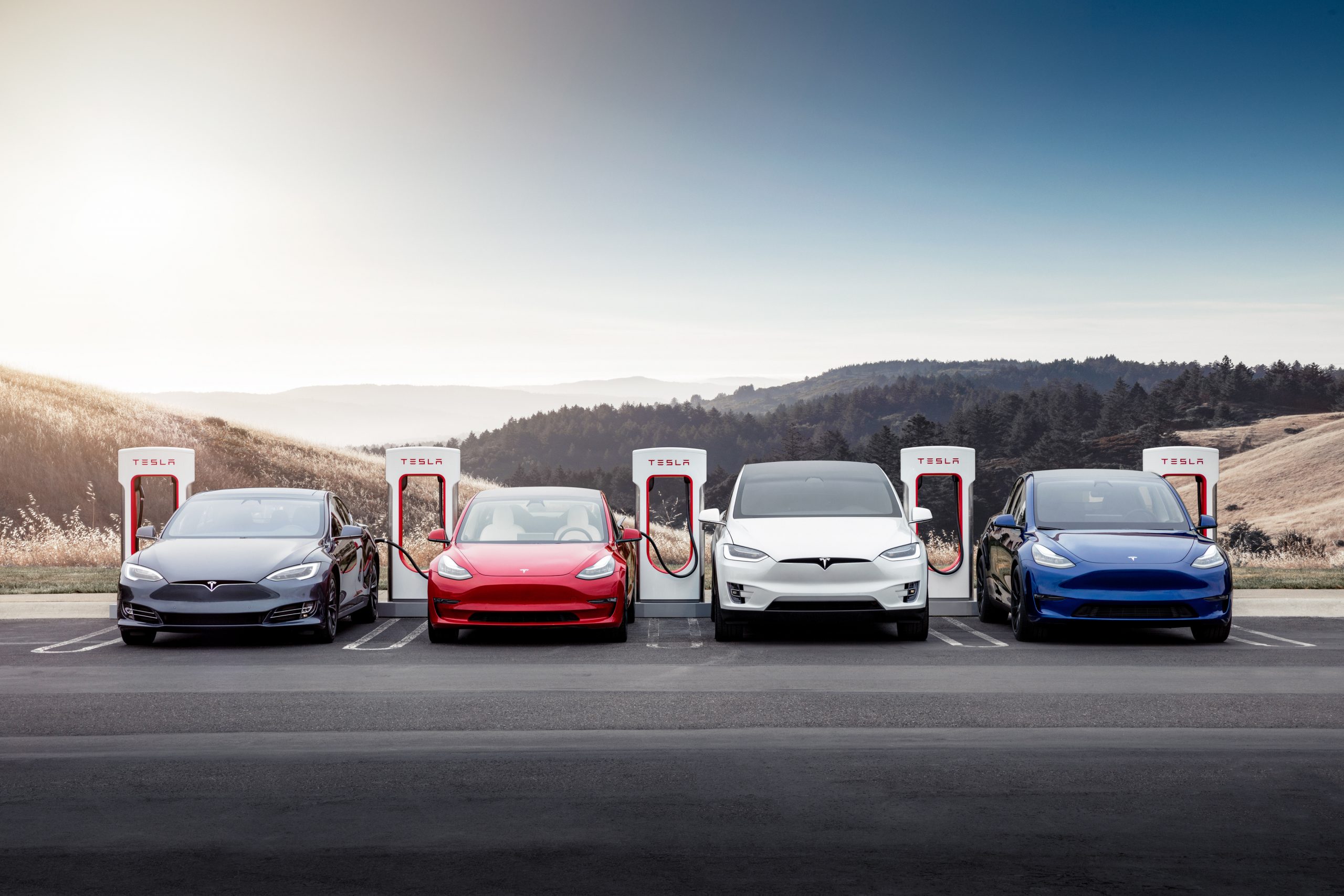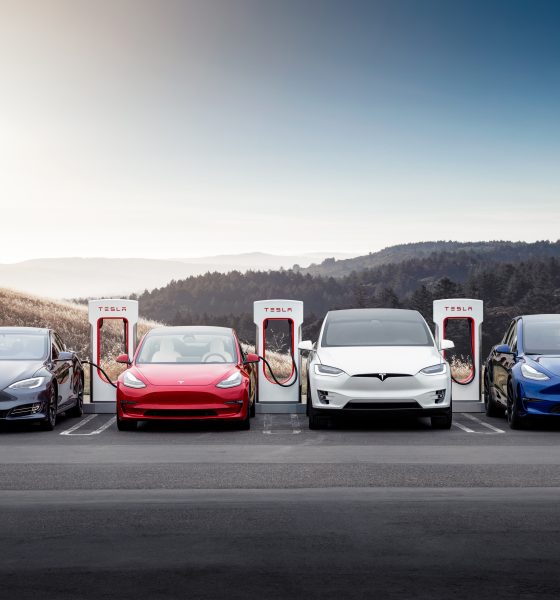

News
Why Tesla competitors will need more than affordability to take EV pioneer’s crown
Over the past several years, automotive manufacturers from all corners of the world have jumped head-first into electric vehicle production. In an attempt to catch Tesla, who has been recognized as the industry leader, car companies have tried all strategies, including undercutting pricing, but they’ll need much more than that to catch up.
Tesla’s most affordable vehicle is the Rear-Wheel Drive Model 3, which starts at $42,990 before incentives. It is far from the most affordable EV on the market, as several vehicles, both in production and planned for the future, have been marketed as the “Tesla Killers,” a term that was widely put to rest a few years ago.
There is no Tesla Killer, unfortunately, because those vehicles wouldn’t even exist if Tesla wasn’t around. They’re purely thoughts and eventual products of any automotive company because of Tesla’s mass influence on the automotive market.
Unfortunately, the angle that these car companies have come up with is, “If it’s cheaper than a Tesla, then people will buy it.”
But there’s a reason the 2023 Nissan Versa, which is priced at $15,730, isn’t the most popular car in the world: consumers want more than a nice, low price tag.
Customers take a lot of things into consideration: looks, features, technology, range, performance, and quality are just a few metrics that car buyers take into account when buying a new car.
When I read some of these headlines about cars that are expected to be the next big thing in the EV sector, it always seems to have something to do with price. But it goes much further than that.
Nearly 50% of 2017-19 Chevy Bolt EVs have been remedied after battery fire recall
In the EV sector today, Tesla still maintains a sizeable lead in terms of sales by model. The Model Y sold 251,974 times last year in the U.S., according to Kelley Blue Book data. The Model 3 was sold 211,618 times. The Model S recorded 32,675 sales, and the Model X had 26,121.
Even the Model X managed to outsell things like the Kia Niro, the Hyundai Ioniq, and the Volkswagen ID.4, despite being Tesla’s most expensive car and least popular model.
Why? There are many factors to EV ownership. The charging network might be the biggest influence, and Tesla dominates in that realm. It also holds a considerable advantage in technology, range, and performance.
Of course, looks are subjective, so it is not worth commenting on. But even if the best-looking car out there drove and operated like a piece of crap, nobody would want it.
Tesla’s advantages lie in places that are far past affordability. As previously mentioned, it goes past price and goes much deeper into what the company offers in terms of a variety of other metrics that make a car truly enjoyable to own.
Companies have long struggled with adequate charging, software, and other things that are hard to solve. It’s not an overnight fix, and Tesla may have much more experience in terms of having a car operate more like a phone than a vehicle. It will take time, and it will come around to these car companies on how to solve these issues.
But make no mistake, Tesla won’t be dethroned by cheaper options alone. Only if these cheaper options also offer superior software and adequate charging infrastructure, along with many other things, will Tesla be beaten.
I’d love to hear from you! If you have any comments, concerns, or questions, please email me at joey@teslarati.com. You can also reach me on Twitter @KlenderJoey, or if you have news tips, you can email us at tips@teslarati.com.

News
Tesla China delivery centers look packed as 2025 comes to a close
Needless to say, it appears that Tesla China seems intent on ending 2025 on a strong note.

Tesla’s delivery centers in China seem to be absolutely packed as the final days of 2025 wind down, with photos on social media showing delivery locations being filled wall-to-wall with vehicles waiting for their new owners.
Needless to say, it appears that Tesla China seems intent on ending 2025 on a strong note.
Full delivery center hints at year-end demand surge
A recent image from a Chinese delivery center posted by industry watcher @Tslachan on X revealed rows upon rows of freshly prepared Model Y and Model 3 units, some of which were adorned with red bows and teddy bears. Some customers also seem to be looking over their vehicles with Tesla delivery staff.
The images hint at a strong year-end push to clear inventory and deliver as many vehicles as possible. Interestingly enough, several Model Y L vehicles could be seen in the photos, hinting at the demand for the extended wheelbase-six seat variant of the best-selling all-electric crossover.
Strong demand in China
Consumer demand for the Model Y and Model 3 in China seems to be quite notable. This could be inferred from the estimated delivery dates for the Model 3 and Model Y, which have been extended to February 2026 for several variants. Apart from this, the Model Y and Model 3 also continue to rank well in China’s premium EV segment.
From January to November alone, the Model Y took China’s number one spot in the RMB 200,000-RMB 300,000 segment for electric vehicles, selling 359,463 units. The Model 3 sedan took third place, selling 172,392. This is quite impressive considering that both the Model Y and Model 3 are still priced at a premium compared to some of their rivals, such as the Xiaomi SU7 and YU7.
With delivery centers in December being quite busy, it does seem like Tesla China will end the year on a strong note once more.
News
Tesla Giga Berlin draws “red line” over IG Metall union’s 35-hour week demands
Factory manager André Thierig has drawn a “red line” against reducing Giga Berlin’s workweek to 35 hours, while highlighting that Tesla has actually increased its workers’ salaries more substantially than other carmakers in the country.

Tesla Giga Berlin has found itself in a new labor dispute in Germany, where union IG Metall is pushing for adoption of a collective agreement to boost wages and implement changes, such as a 35-hour workweek.
In a comment, Giga Berlin manager André Thierig drew a “red line” against reducing Giga Berlin’s workweek to 35 hours, while highlighting that Tesla has actually increased its workers’ salaries more substantially than other carmakers in the country.
Tesla factory manager’s “red line”
Tesla Germany is expected to hold a works council election in 2026, which André Thierig considers very important. As per the Giga Berlin plant manager, Giga Berlin’s plant expansion plans might be put on hold if the election favors the union. He also spoke against some of the changes that IG Metall is seeking to implement in the factory, like a 35-hour week, as noted in an rbb24 report.
“The discussion about a 35-hour week is a red line for me. We will not cross it,” Theirig said.
“(The election) will determine whether we can continue our successful path in the future in an independent, flexible, and unbureaucratic manner. Personally, I cannot imagine that the decision-makers in the USA will continue to push ahead with the factory expansion if the election results favor IG Metall.”
Giga Berlin’s wage increase
IG Metall district manager Jan Otto told the German news agency DPA that without a collective agreement, Tesla’s wages remain significantly below levels at other German car factories. He noted the company excuses this by referencing its lowest pay grade, but added: “The two lowest pay grades are not even used in car factories.”
In response, Tesla noted that it has raised the wages of Gigafactory Berlin’s workers more than their German competitors. Thierig noted that with a collective agreement, Giga Berlin’s workers would have seen a 2% wage increase this year. But thanks to Tesla not being unionized, Gigafactory Berlin workers were able to receive a 4% increase, as noted in a CarUp report.
“There was a wage increase of 2% this year in the current collective agreement. Because we are in a different economic situation than the industry as a whole, we were able to double the wages – by 4%. Since production started, this corresponds to a wage increase of more than 25% in less than four years,” Thierig stated.
News
Tesla is seeing a lot of momentum from young Koreans in their 20s-30s: report
From January to November, young buyers purchased over 21,000 Teslas, putting it far ahead of fellow imported rivals like BMW and Mercedes-Benz.

Tesla has captured the hearts of South Korea’s 20s-30s demographic, emerging as the group’s top-selling imported car brand in 2025. From January to November, young buyers purchased over 21,000 Teslas, putting it far ahead of fellow imported rivals like BMW and Mercedes-Benz.
Industry experts cited by The Economist attributed this “Tesla frenzy” to fandom culture, where buyers prioritize the brand over traditional car attributes, similar to snapping up the latest iPhone.
Model Y dominates among young buyers
Data from the Korea Imported Automobile Association showed that Tesla sold 21,757 vehicles to the 20s-30s demographic through November, compared to BMW’s 13,666 and Mercedes-Benz’s 6,983. The Model Y led the list overwhelmingly, with variants like the standard and Long Range models topping purchases for both young men and women.
Young men bought around 16,000 Teslas, mostly Model Y (over 15,000 units), followed by Model 3. Young women followed a similar pattern, favoring Model Y (3,888 units) and Model 3 (1,083 units). The Cybertruck saw minimal sales in this group.
The Model Y’s appeal lies in its family-friendly SUV design, 400-500 km range, quick acceleration, and spacious cargo, which is ideal for commuting and leisure. The Model 3, on the other hand, serves as an accessible entry point with lower pricing, which is valuable considering the country’s EV subsidies.
The Tesla boom
Experts described Tesla’s popularity as “fandom culture,” where young buyers embrace the brand despite criticisms from skeptics. Professor Lee Ho-geun called Tesla a “typical early adopter brand,” comparing purchases to iPhones.
Professor Kim Pil-soo noted that young people view Tesla more as a gadget than a car, and they are likely drawn by marketing, subsidies, and perceived value. They also tend to overlook news of numerous recalls, which are mostly over-the-air software updates, and controversies tied to the company.
Tesla’s position as Korea’s top import for 2025 seems secured. As noted by the publication, Tesla’s December sales figures have not been reported yet, but market analysts have suggested that Tesla has all but secured the top spot among the country’s imported cars this year.








